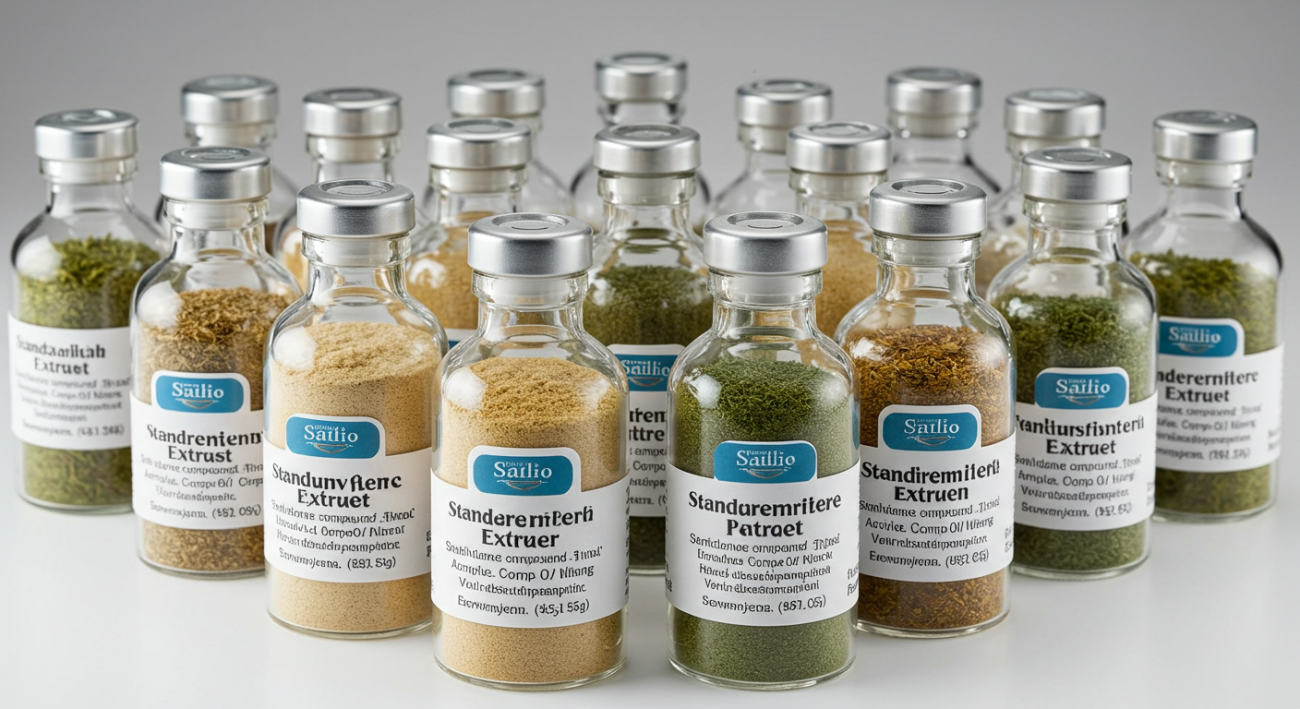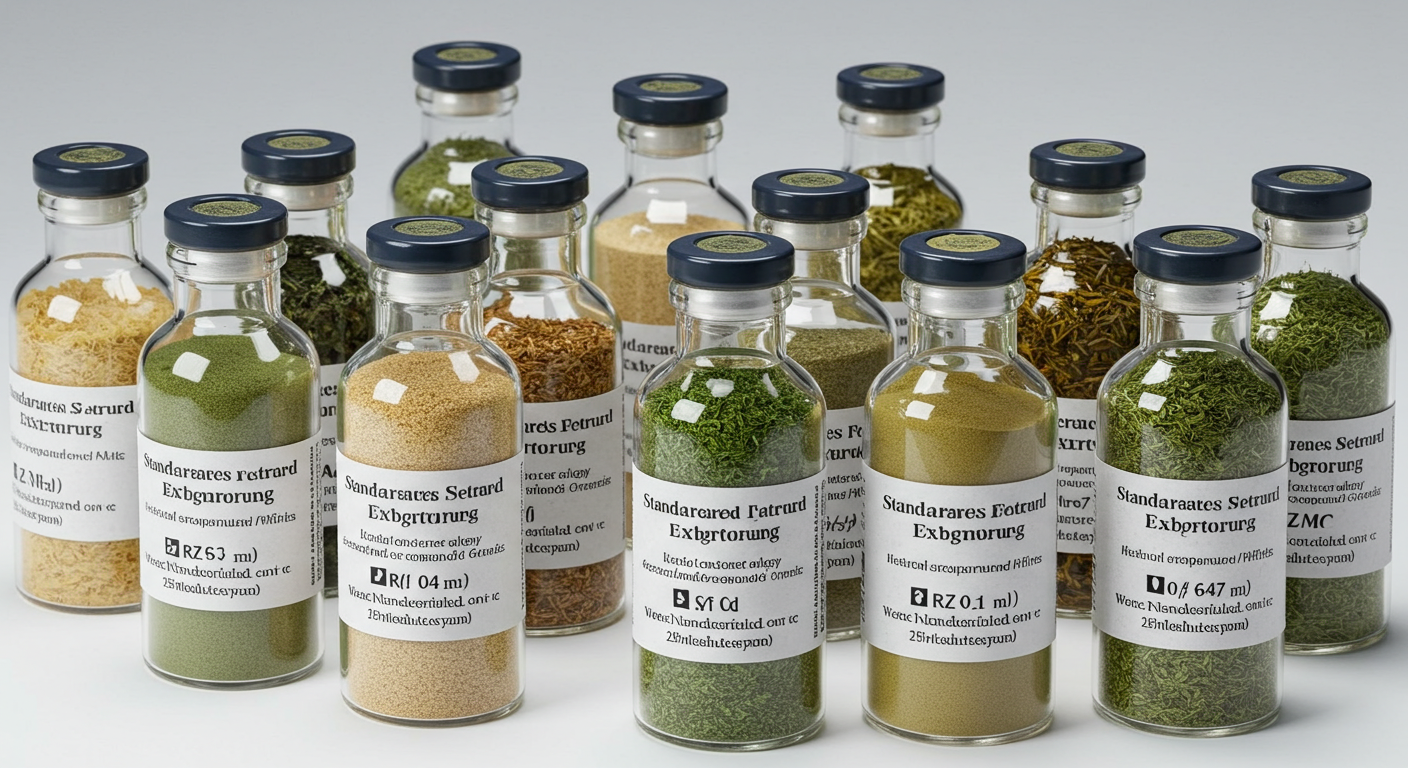Introduction
Like all products, herbal extracts have a limited timeframe in which they need to be consumed. This brings to mind one of the rather frequent questions regarding herb extracts: the shelf life of extracts. As with any product, herbal and holistic health products, supplements, and even cosmetics contain some active ingredients that, if not stored properly, can go bad. The extraction methods used are equally important. Both the buyer and seller would care about the production methods because fragile herbal products require special packaging to maintain their potency.
What are Standardized Herb Extracts?
How long do standardized herb extracts last? With standardized extracts, it is guaranteed that the most critical active components of the herb will be measured. More advanced than raw herbs, standardized extracts are also more advanced than tinctures and other herbal preparations. They undergo processing, which includes stringent regulation as well as quality control. From these extracts, pharmacopeial-grade nutraceuticals and even medicines are manufactured.
Proposed Information
All steps in the extraction method, formulation, and packaging process impact the shelf life of herbal dietary supplements. For most standardized herbal extracts, bioactivity retention spans between one to five years. Let us consider some examples:
- Water-based herbal extracts have a retention period of bioactivity for one to two years.
- Alcoholic or glycol-based extracts. These have an approximate potency retention period of two to three years.
- Optimal conditions for dry powdered herbal extracts preserve their efficacy for nearly five years.
WHO expects this information to be placed on the front label, where critical data can be accessed instantly.
Do Controlled or Standardized Herb Extracts Have an Expiry Date?
It is these controlled or standardized herb extracts that pose the question of shelf life. It is these controlled extracts that raise the concern of how long they remain active. These herbal products have high bioactivity and are often part of nutraceuticals or pharmaceutical preparations. Herbal extracts should have a shelf life of two to three years to ensure substantial use of the active ingredients. A significant proportion of active constituents is retained. Like all herbal products, herbal extracts are affected by moisture, heat, oxygen, and light.
Keeping These External Factors Constant Would Greatly Improve Efficacy
To maintain the desired low temperature and dryness levels of the extracts, cold, dry, and colorless containers are essential.
- Through Certificate of Analysis (COA) checks alongside the supplier’s expiration date, protective or stabilizing herbal actions can assure quality herbal extracts through protective or stabilizing herbs.
- Substantiated labeled claim products are sold by GMP-certified vendors, and these products undergo tests and validations from certified laboratories. Documentation on the effectiveness of maintenance of the described potency preservation is detailed on our page. Do not forget to browse.
- Though extracts are presumed to have a shelf life of a few years, products will almost always be more useful when properly managed rather than waiting for shelf-life grace periods.

Shelf Life Determining Factors for Extracts
They provide a defined set within a defined set of topical herbal formulations with chiropractic influences.
1. Chosen Extraction Method Type:
- Supercritical CO2 extraction leads to the highest stability out of all extraction methods.
- Aquatic extractions are the least stable due to being prone to microbial degradation.
2. Their Phytochemical Profiles and Classifications:
- Essential oils possess volatile components that can lead to decomposition.
- The compounds saponin and flavonoid are believed to have ‘stabilization’ potential, which means they can make some products more stable.
3. Some Particular Considerations for Storage:
- In some cases, light, heat, and other oxidizing agents may accelerate decomposition.
- From a commercial perspective, storage areas that are ideal are cool, dark, and dry areas maintained at 15 to 25 degrees Celsius.
4. About the Sales Consignment:
- Preservation and potency are enhanced through the use of amber glass bottles and vacuum seals.
- Phytochemicals absorb into the walls of Plastic containers, compromising the integrity of the container. Thus, these containers are to be avoided.
Do Herbal Extracts Expire?
Phytochemical compounds are subject to compositional change over time. These changes can turn beneficial attributes harmful or turn them into something undesirable and dangerous. Even the most stable extracts will degrade in some fashion over time, suggesting some form of expiration is unavoidable. Most notable changes include:
- Changes to appearance and smell
- Weakening fragrance and overall potency
- Exhibiting clumping and discoloration in powdered form
- Liquid separation
Approaches With the Best Results for the Storage of Herbal Extracts
Good practices enable users to maintain the quality and potency of herbal extracts, phytochemicals, and dietary supplements. The following guidelines are provided to maximize extract potency.
- Use containers with no possible air exchange to avoid moisture ingress and the damage of oxidation and oblique air.
- Herbal extracts should not be exposed to sunlight.
- Packed herbal extracts should not be opened; air-tight sealed to prevent oxidation.
- Open containers must be stored in cool refrigeration temperatures.
For methodologies and other relevant information, kindly refer to the handbook on the stability of extracts.
Compliance With Good Manufacturing Practices (GMP) Report, and Mark Compliance of Expiry Date and Shelf Life
It is unwritten but best known that these suppliers offer some kind of unstated assurance of compliance with noted life expectancy and shelf life as stated in the Overview Guideline, ISO Standards, and PhRMA-track compliance documents. Validating the shelf life requires an external laboratory peer review. The tests include:
- Testing is done within the ICH guideline parameters.
- Seal integrity assesses the potential ingress of light and oxygen.
- Expiry is determined based on the findings of the conducted stability study.
Conclusion
How long do standardized herb extracts last? The shelf life for herbs is two to five years. Preserving extracts of herbs requires a relevant SOP document. Most importantly, active herbal components should not be subjected to oxidative degradation. Storage-sensitive materials also need protective measures. Personal health and business needs of clients are catered to through herbal potent extracts offered by B-Thriving. Make the right decision today!

